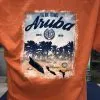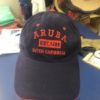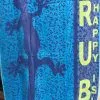Aruba’s quaint capital, Oranjestad, is a charming cruise ship port packed with attractions and family-friendly things to do. Stroll among the brightly-hued Dutch colonial buildings; browse the galleries, shops, and museums; or tour the Aruba Aloe museum and factory or The Butterfly Farm.
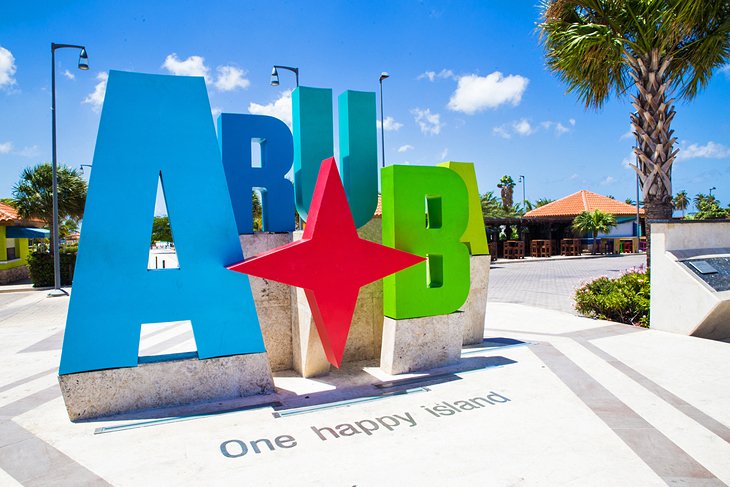
Scattered around the island are many beautiful beaches. The north coast lures swimmers with its calm waters and seemingly endless sweep of glittering sand, while the rough and wave-battered east coast offers dramatic vistas and dangerous surf.
Adventures abound on this rugged island. Away from the resort strip, you can slide down towering sand dunes, ride the swells on a kiteboard, discover unique rock formations, swim in natural pools, fish for wahoo and tuna, and explore some of the island’s rocky cacti-cloaked terrain in four-wheel-drive vehicles or on horseback. In late January and early February, Carnival ignites the island with dances, parades, contests, and other festivities.
Discover the best places to visit on this popular Caribbean island with our list of the top tourist attractions in Aruba.
Note: Some businesses may be temporarily closed due to recent global health and safety issues.
1. Beaches
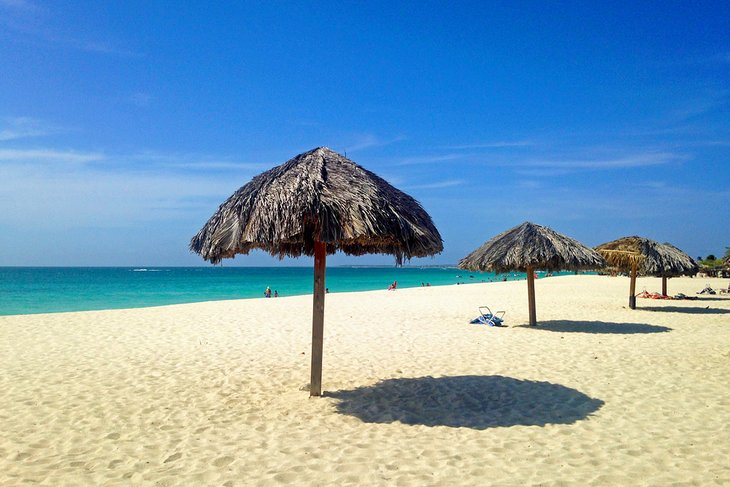
Aruba offers an abundance of dazzling beaches. The northwest coast of Aruba, from Druif Beach to Eagle Beach, and Palm Beach to Malmok, is an 11-kilometer sweep of uninterrupted white sand and clear jade waters. Eagle Beach and Palm Beach are favorites.
Near the California Lighthouse, Malmok Beach and secluded Arashi Beach are great for swimming and snorkeling.
On the windward east coast, Bachelor’s Beach, Boca Grandi, Boca Prins, Dos Playa, Black Stone Beach, and Boca Andicuri have stronger currents and larger waves. Although they are not recommended for swimming, windsurfers and kitesurfers can tackle the swells.
The beaches in the southeast are less populated. Locals’ favorite, Baby Beach is great for inexperienced swimmers, with its shallow basin and calm waters.
2. Oranjestad
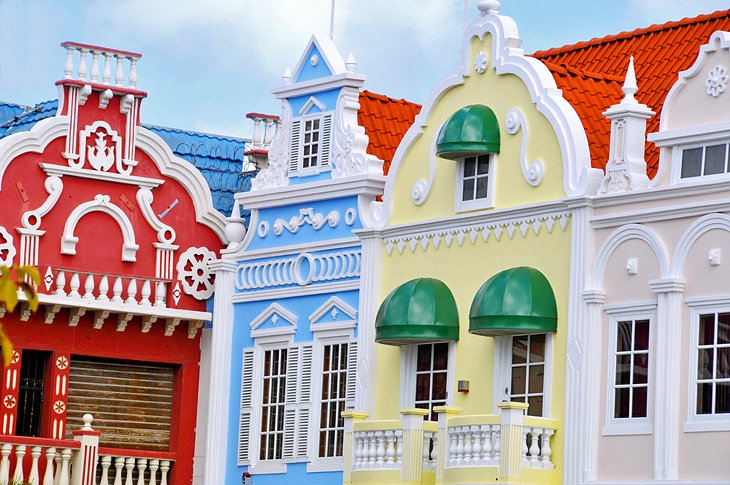
Oranjestad, Aruba is a charming city and the capital and cruise port of this tiny island. The most striking feature is the Dutch colonial architecture. Pastel-hued buildings with a Spanish and Caribbean twist jostle along the tidy streets, and you’ll find many shops, restaurants, museums, galleries, and entertainment options. Overall the city is simply a fun place to walk around and soak up the atmosphere.
Well-maintained Wilhelmina Park, on the waterfront, is one of the city’s main attractions, particularly in June, September, and October when many of the plants are in bloom. Look for iguanas along the water’s edge.
A short walk from here, you can explore the small Aruba Historical Museum, with artifacts related to the entire history of the island. It’s housed in the King Willem III Tower at Fort Zoutman, which was built as a lighthouse and pirate-spotting vantage point.
Other Oranjestad highlights include the Aruba Aloe Factory, where you can learn about the medicinal qualities of this wonder plant and purchase skin-soothing souvenirs, and The Butterfly Farm, a highlight for children and avid photographers.
If you’re a shopper, Renaissance Shopping Mall features high-end stores like Chanel, Gucci, and Cartier.
For fantastic views over the city, hike to the top of the 165-meter-tall volcanic rock formation, Hooiberg. And if you prefer a more relaxing sightseeing experience, a great way to get a feel for the city is to hop aboard the bright red Aruba Streetcar, a free open-air bus that runs between the top attractions in the city.
3. Arikok National Park
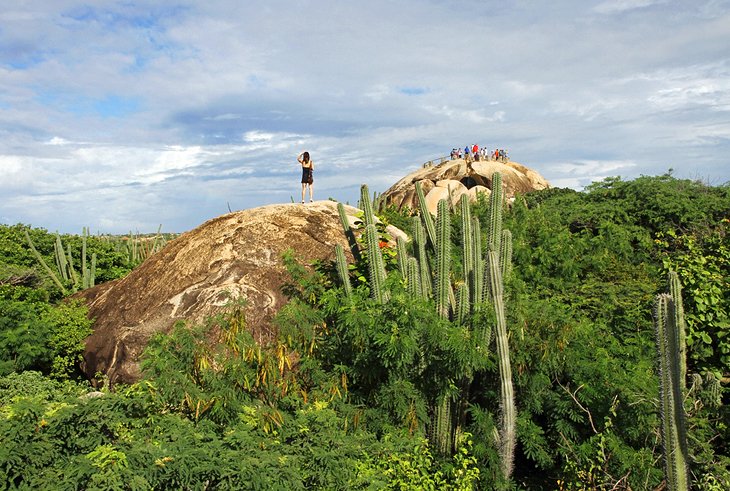
Outdoor enthusiasts love exploring rugged Arikok National Park. Covering almost 20 percent of the island, the park features cacti-covered landscapes, caves, sand dunes, and unique rock formations.
Large boulders adorned with Indian paintings make up the odd rock formation known as Ayó, and the Casibari Boulders, weathered by trade winds, are strewn amid dry scrub. You can walk the trails and steps ascending through the rocks for great views and photo opportunities.
Arikok National Park also encompasses the wave-thrashed shores of the island’s north coast. Wave erosion carved the Natural Bridge at Anicouri, which collapsed in 2005, but you can still see a smaller natural bridge here, and it’s a great spot for a picnic.
On the picturesque waterfront, the old stone walls of the Bushiribana Gold Mill Ruins are the remains of a 19th-century gold smelter.
Parakeets, goats, lizards, snakes, and iguanas are just some of the creatures found in the park. Since the roads can be rugged, a 4WD vehicle is recommended- some sites can’t be accessed via 2WD vehicles-but you can also explore on horseback and hike the many trails. To really enjoy all the park’s top sites, a full day is recommended here.
Address: San Fuego 71, Santa Cruz
4. Boca Prins
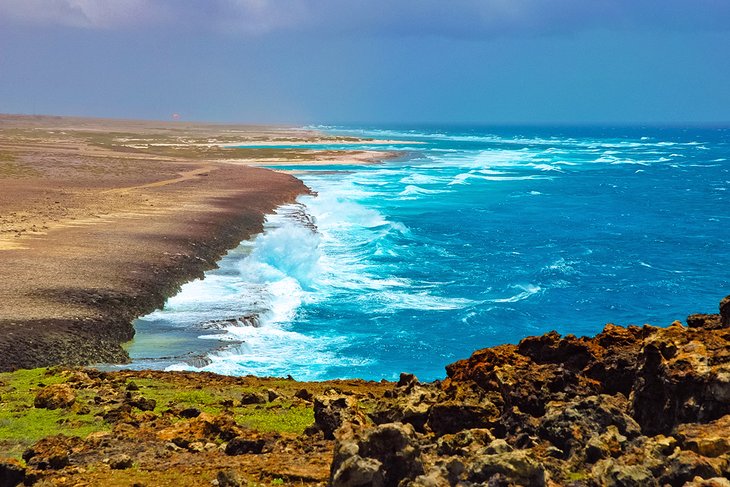
In Arikok National Park, near the Fontein Cave and Blue Lagoon, Boca Prins is a dramatic stretch of coast backed by massive sand dunes. Trade winds sculpt these shifting sands, and adventure seekers love to slide from their peaks.
At the narrow sliver of beach, crashing surf and soaring limestone cliffs create dramatic coastal vistas. Swimming here is too dangerous, but it’s a great spot for a picnic, and you can descend the steps to the shore, sink your feet in the sand, and feel the spray of the salty surf on your face. Four-wheel drive vehicles are recommended.
5. California Lighthouse & California Dunes
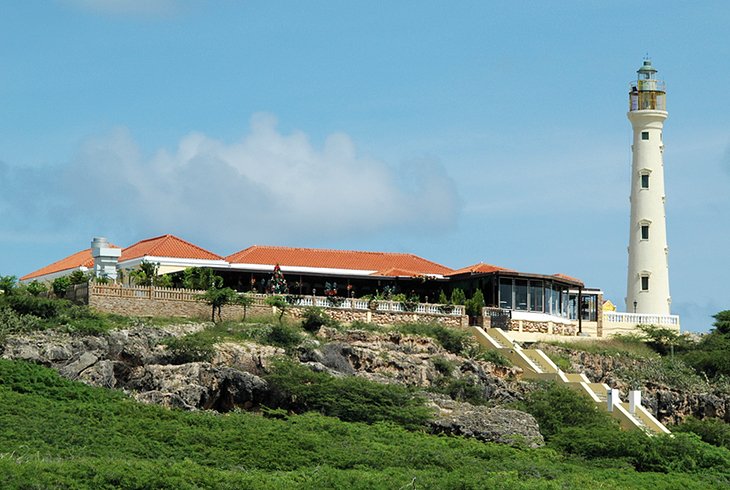
At the northern tip of the island, the California Lighthouse stars on many Aruban postcards and tourist brochures. It was named for the S.S. California, which sunk off the coast here. The surrounding area is rugged and beautiful, with sand dunes called the California Dunes, cacti, and even some grazing goats.
Although the lighthouse is closed to the public, it’s a great spot to compare the calm waters of the western shore with the rough waves of the east. Sunset is a beautiful time to visit the lighthouse and enjoy panoramic island views. Many guests linger for dinner at the nearby restaurant.
Address: Northern Aruba, Palm – Eagle Beach
6. Aruba’s Dive Sites
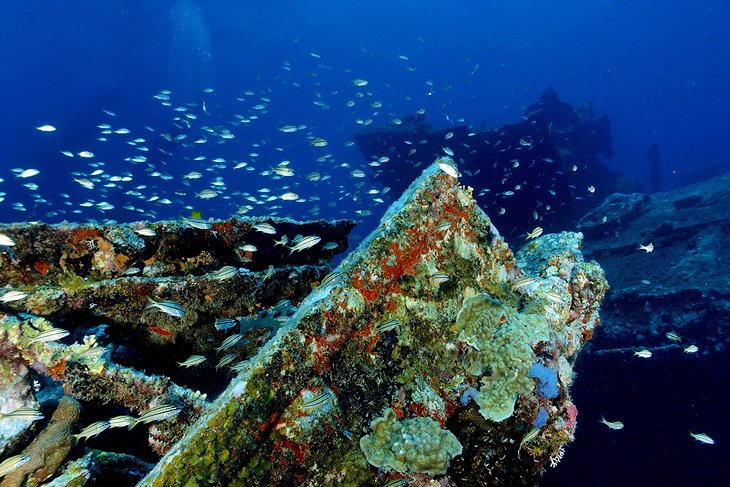
Aruba is famous for its excellent wreck diving, catering to divers of all levels. Sunken vessels range from tugboats to cargo ships, and even plane fuselages.
Lying between Arashi and Malmok, the Antilia is the Caribbean’s largest wreck and one of Aruba’s most popular dives. Snorkelers can also explore the shallow-water sections of this wreck. Other popular wrecks include the 76-meter former concrete freighter Jane Sea and the oil tanker Pedernales.
Coral reefs lace the island’s leeward shore. Some of the best reef dive sites include Skalahein Reef; Plonco Reef; and Mas Bango Reef, which is also excellent for snorkeling. Those who prefer to stay dry can board the Atlantis Submarine to view marine life, coral formations, and shipwrecks.
7. Natural Pool
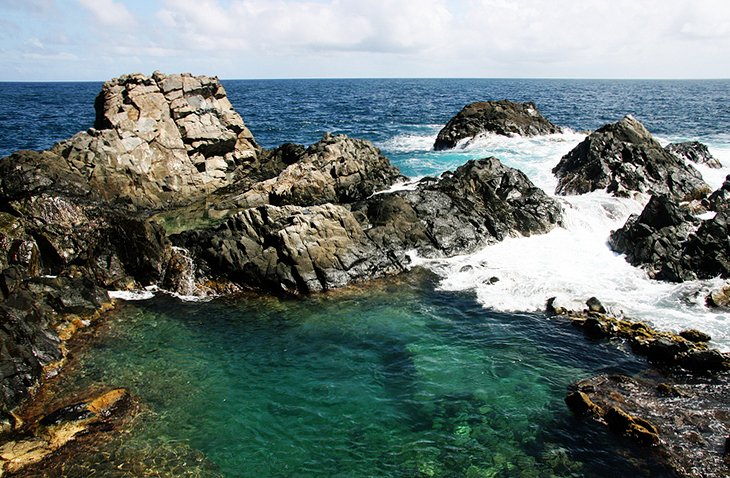
The Natural Pool is just that, a protected swimming hole filled by waves crashing over the slick rocks. You can swim and snorkel here, although the area is really not that big. The pool lies down a rugged road and is best reached by 4WD vehicle. You can navigate the area yourself, but the road is not well marked.
The best way to visit this attraction is on an organized 4WD tour, like the four-hour Natural Pool and Indian Cave Jeep Safari or the Aruba ATV Tour with a Natural Pool Swim. You can also visit the pool on horseback tours.
8. The Butterfly Farm
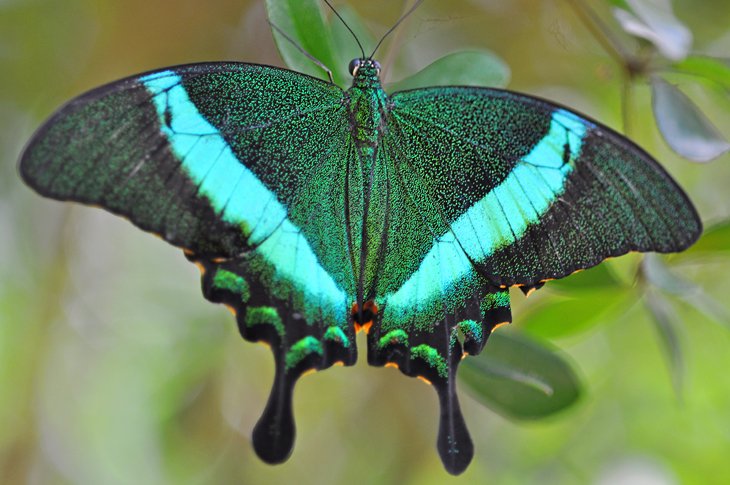
Children, photographers, and anyone who loves nature will enjoy The Butterfly Farm near Palm Beach. During your visit, you can walk through an enclosure with lush, tropical gardens and witness these winged beauties fluttering around you.
Guided tours help you identify the different species, and you’ll also learn about butterfly habitats and the life cycles of these delicate creatures. If you arrive early enough, you may even see butterflies emerging from their chrysalis.
This is one of the most unique things to do in Aruba and a wonderful way to capture colorful close-up photos. Best of all, your admission allows you to return as many times as you like during your stay.
Address: J.E. Irausquin Blvd, Noord, Aruba
9. Aruba Aloe Factory & Museum Tour
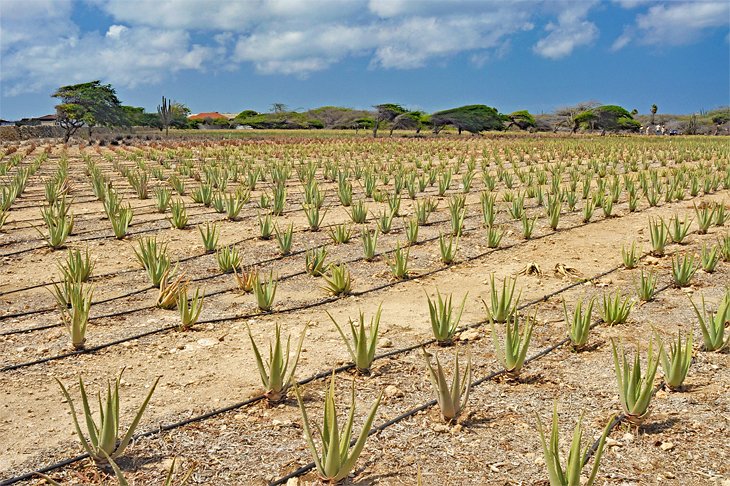
One of the top free things to do in Aruba is take a tour at the Aruba Aloe Museum, Factory, and Store. During this fascinating tour, you’ll learn everything you ever wanted to know about aloe plants.
Watch a short film about the history of aloe production in Aruba, witness your guide “filet” an aloe leaf to extract the glutinous flesh, see the plants growing in the sandy soil, and learn about aloe’s health benefits. The tour also includes a walk through the factory, where you can see how the products are made and packaged.
After your tour, you can purchase some aloe products in the gift shop to soothe your sunburn or take home as souvenirs. Tours depart every 15 minutes, and self-guided tours are also possible.
Address: Pitastraat 115, Aruba
Official site: https://arubaaloe.com/
10. Philip’s Animal Garden
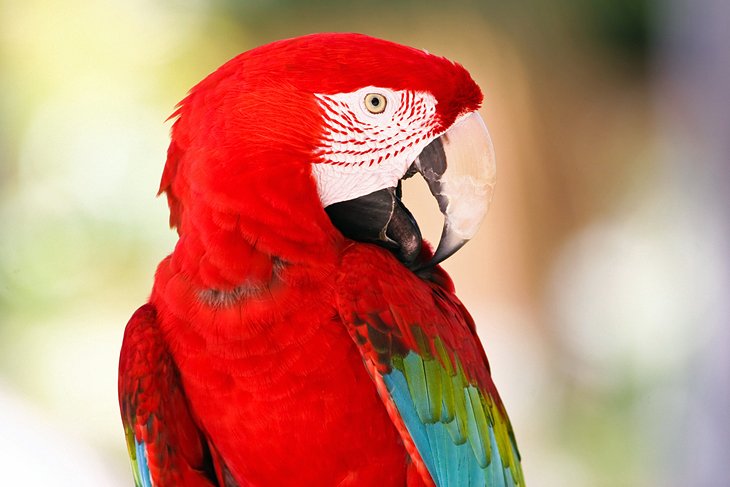
The non-profit Philip’s Animal Garden is a sanctuary and rehabilitation center for more than 52 species of animals. Animal-lover Philip Merryweather poured his passion for exotic animals into this popular tourist attraction, which runs educational and interactive tours.
Favorite residents include snakes, kangaroos, monkeys, emus, ostriches, and ocelots, but you’ll also find farmyard animals such as goats, pigs, horses, and donkeys.
This is a fantastic place to bring the kids. The friendly staff are happy to answer questions and share the stories of each resident, and you can touch and feed some of the creatures. A small donation grants you entrance as well as a bag of carrots to feed the animals. All funds go towards care of the animals.
Animal lovers might also enjoy a quick visit to Donkey Sanctuary Aruba, where you can pet and feed these rescued animals. Entry is by donation. And if you want even more critter-based fun, head to the Aruba Ostrich Farm for a quick tour and a chance to learn more about these flightless, feathered beasts.
Address: Alto Vista 116, Noord
Official site: http://www.philipsanimalgarden.com/
11. Alto Vista Chapel
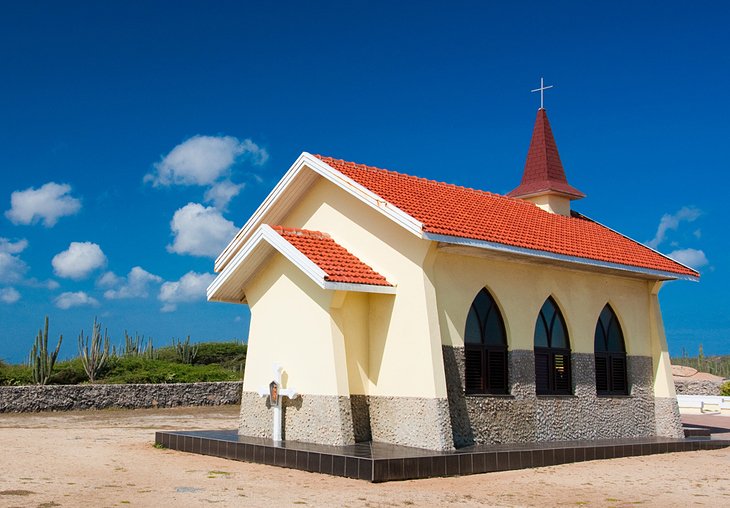
The small Alto Vista Chapel is one of Aruba’s cherished landmarks. Often called the “Pilgrim’s Church,” Alto Vista was originally built in 1750 by the Spanish missionary, Domingo Antonio Silvestre. The current structure was built in 1954 on the same site, and it’s one of the island’s most famous landmarks.
Alto Vista means “highest view” in Spanish and, true to its name, the church sits high on a hill with beautiful views over the island’s north shore. The Stations of the Cross mark the road leading to the chapel.
While you’re here, walk behind the chapel to the Peace Labyrinth, where you can wander the circular path in quiet contemplation.
Address: Alto Vista, Noord
12. Rancho Daimari Horseback Tour
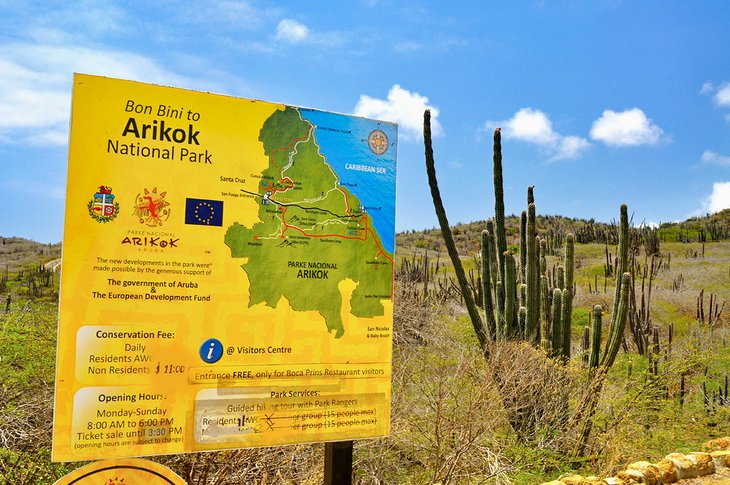
On the remote northeast coast of Aruba, Rancho Daimari offers scenic horseback tours to sites such as the Natural Pool, Arikok National Park, Andicuri Beach, and the sand dunes. The ranch overlooks Daimari beach on the site of a former coconut plantation, originally established in the 17th century.
Guests of all riding abilities are welcome, although the terrain can be rocky and steep. You’ll also have an opportunity to ride the horses on the beach. Tours are usually about three hours and include pickup and drop-off from your hotel.
Official site: http://ranchodaimariaruba.com/
13. De Palm Island
A five-minute ferry ride from the mainland, De Palm Island is a small private splotch of sand, packed with activities. For all-inclusive rates, guests can swim, snorkel, or zip around on banana boats, while land-based activities include beach volleyball, basketball, bingo, salsa lessons, and card games.
Families with young children will enjoy the colorful water park with spiral waterslides and splash pools. For additional fees, guests can try the Sea Trek underwater helmet walk, SNUBA, or indulge in massages.
Address: Port de Palm, Aruba
Official site: https://depalmisland.com/
-
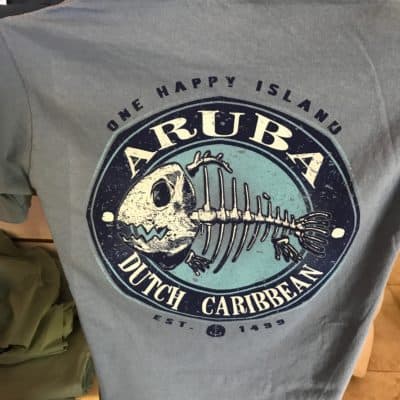
Skeleton fish dark Blue
$33.00 – $37.50 -

goodhooker (orange)
$33.00 – $37.50 -
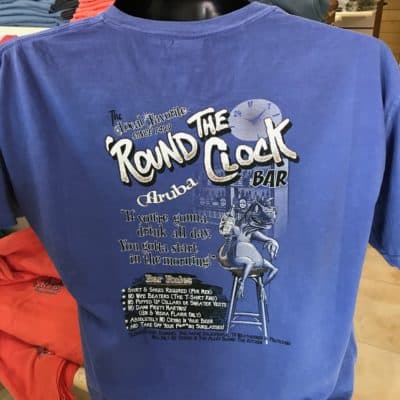
roundtheclock(blue)
$33.00 – $37.50 -
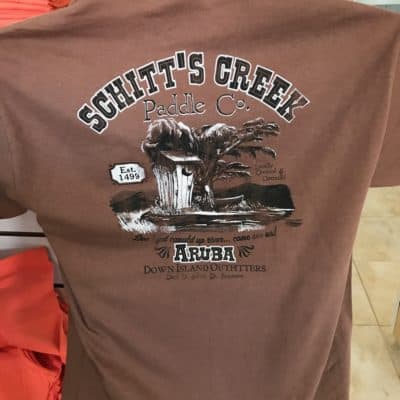
schittscreek (brown)
$33.00 – $37.50 -

roundtheclock(red)
$33.00 – $37.50 -

goodhooker(green)
$33.00 – $37.50 -
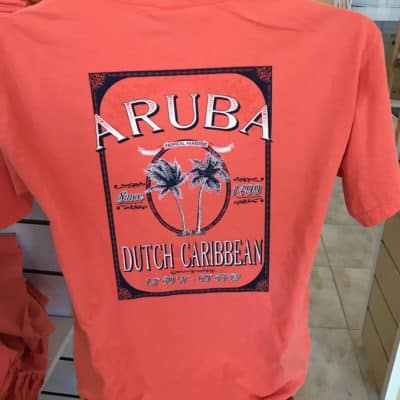
doublepalmtree(orange)
$37.50 – $40.50 -
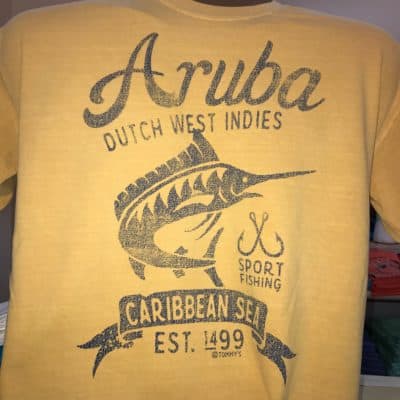
sailfish(mustard)
$37.50 – $40.50 -
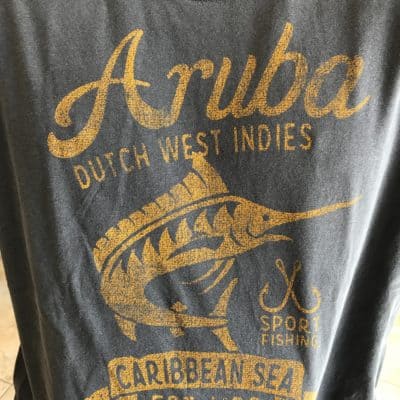
sailfish(charcoal)
$37.50 – $40.50 -
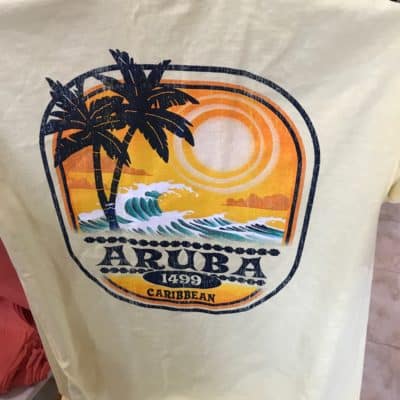
treesunseayellow
$37.50 – $40.50 -

goodhooker(aqua)
$33.00 – $37.50 -

imthecaptain(blue)
$33.00 – $37.50







































